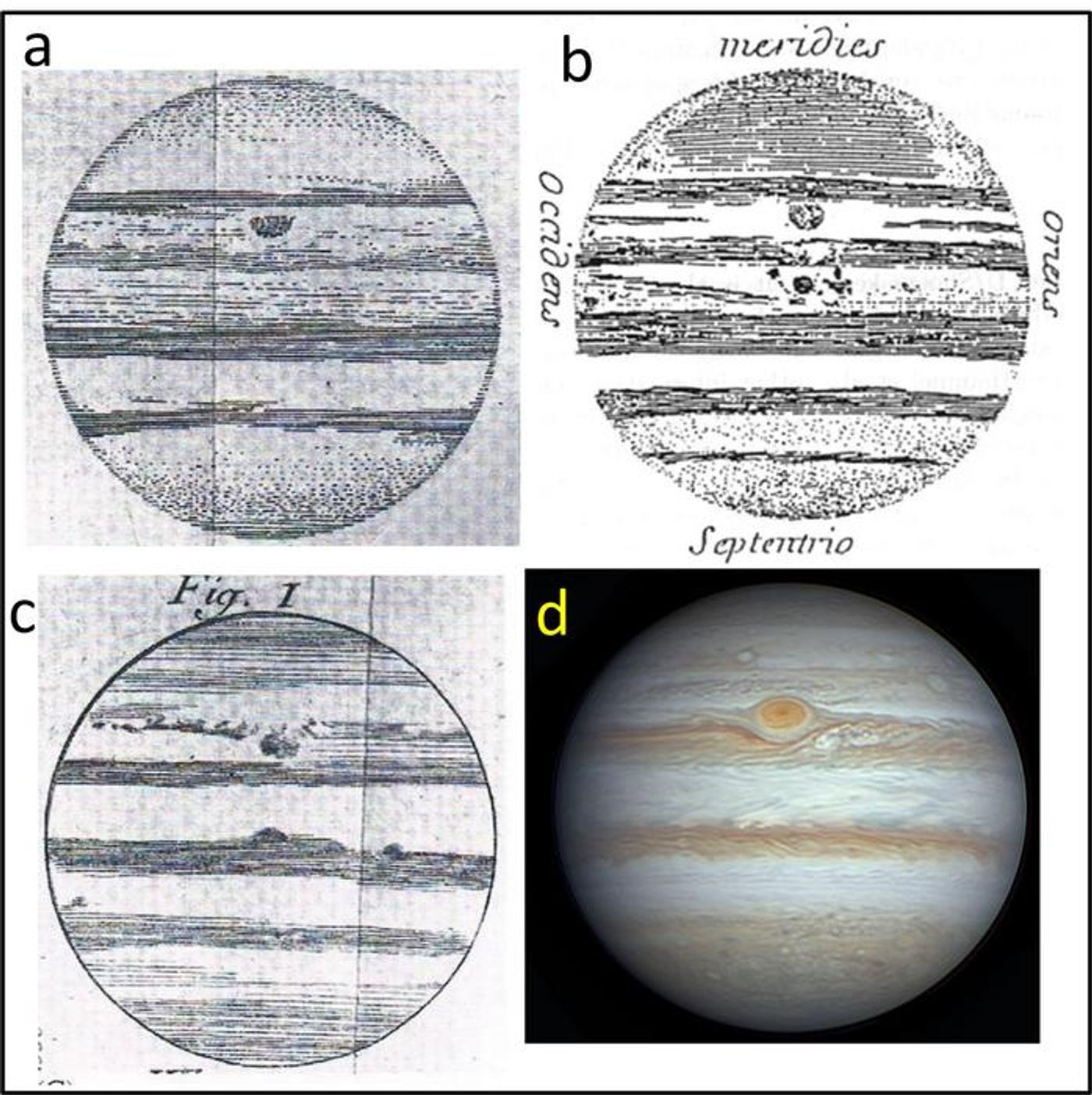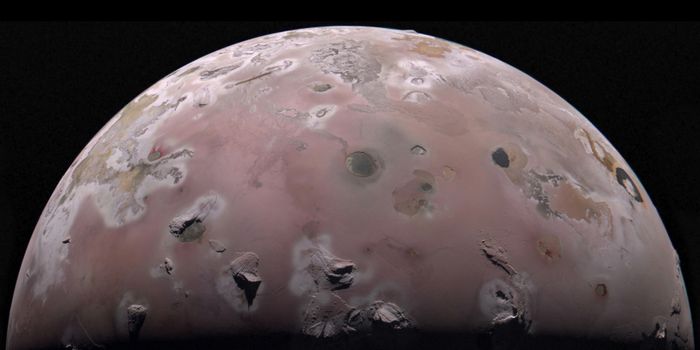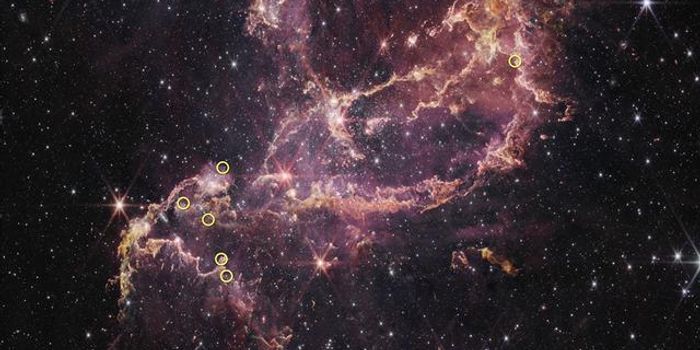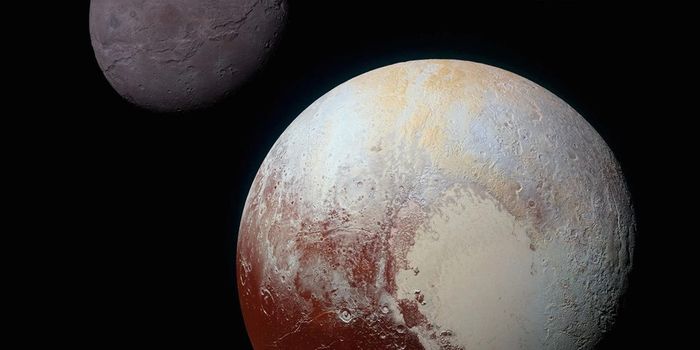Jupiter's Great Red Spot: A Different Spot from Cassini's 1665 Observation
Jupiter’s Great Red Spot was first discovered in 1665 by astronomer Giovanni Domenico Cassini, and both scientists and the public have been awe-stricken by its beauty and the processes that created it. However, a recent study published in Geophysical Research Letters postulates that the famous spot we’ve adored for so long is not the same spot that Cassini observed centuries ago. This study holds the potential to help astronomers better understand the formation and evolution of Jupiter and the massive cyclonic storms that comprise its giant atmosphere.
For the study, the researchers analyzed historical records of both the initial discovery from Cassini, which was dubbed the “Permanent Spot” (PS) and was observed until 1713, and the Great Red Spot (GRS), which was first observed in 1831. Combining these historical records with computer models, the researchers determined that the size changes and movements over time of PS contrast those of GRS.
Illustrations of Jupiter and its Great Red Spot from the astronomer Giovanni Domenico Cassini in the 17th century (a-c) compared with Jupiter's present-day Great Red Spot as obtained by Eric Sussenbach in 2023. (Credit: Sanchez-Lavega et al. (2024))
Using the computer models, the team determined that GRS was likely produced from zonal jets that existed both above and below it in latitude, or north and south, which contrasts previous hypotheses that it was created from a superstorm. Finally, the team also determined that the GRS likely formed approximately 190 years ago, which also contrasts the longstanding hypothesis that it has existed for centuries.
“It has been very motivating and inspiring to turn to the notes and drawings of Jupiter and its Permanent Spot made by the great astronomer Jean Dominique Cassini, and to his articles of the second half of the 17th century describing the phenomenon,” said Dr. Agustín Sánchez-Lavega, who is a professor in the Department of Applied Physics at the University of the Basque Country (UPV/EHU) and lead author of the study. “Others before us had explored these observations, and now we have quantified the results.”
Going forward, the team aspires to gain greater insight into the long-term evolution of the Great Red Spot, specifically pertaining to when it will disappear once it shrinks to a certain size.
What new discoveries about Jupiter’s Great Red Spot will researchers make in the coming years and decades? Only time will tell, and this is why we science!
As always, keep doing science & keep looking up!
Sources: Geophysical Research Letters, EurekAlert!, American Geophysical Union









